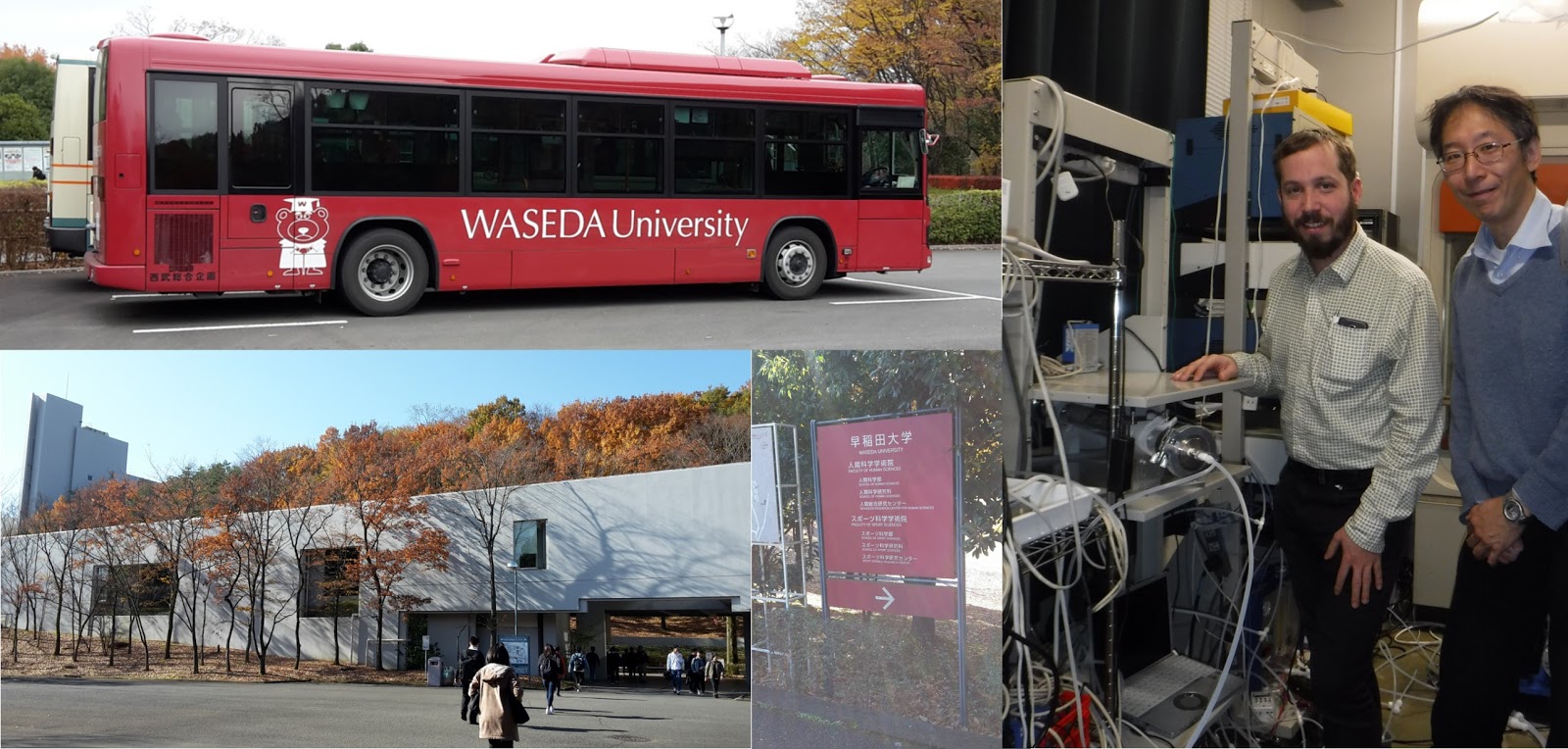My visit at Waseda University, Tokyo, Japan
Prof. Jun Matsumoto (Waseda University, Tokyo, Japan) is one of the few researcher that has published about his experimental research on ozone reactivity. I recently visited his laboratory on the Tokorozawa Campus to discuss his research.
As I was reading about ozone reactivity measurements for proposals, a name stood out: Prof. Jun Matsumoto. He published results from ozone reactivity measurements a few years ago (Matsumoto, 2014) and I contacted him to ask if he would be wiling to host me for a visit at the beginning of the project to familiarize myself with his method. He agreed and as the proposal got funded, I started to organize my trip to Tokyo, which took place at the end of November and beginning of December.
Prof. Matsumoto met me on the first day at the Tokorozawa train station, next to my hotel, and we traveled together with train and bus to the university campus. There we first discussed about the current state of his research and on the following day, we visited the laboratory and Prof. Matsuomoto demonstrated how measurements are performed. On the following days, we interpreted the results and made some simple model calculations to compare against the measurements. This gave me a lot of food for thought and useful technical and practical information to keep in mind while developing our own system.
 |
| Figure 1. Anti-clockwise from top left corner: Waseda University shuttle bus, entrance of Tokorozawa campus, directions sign, together with Prof. Jun Matsumoto in his laboratory (Pictures: Arnaud Praplan, Jun Matsumoto, CC-BY-4.0). |
I am very thankful that Prof. Matsumoto took the time to answer all my questions, but also help me to discover a bit of Japanese culture. He took me to visit a traditional Japanese farm house, which hosts the Totoro no Furusato Foundation (including a "real-life" sized Totoro!), and took me twice out for dinner. On one occasion it was in an izakaya (居酒屋) restaurant where Prof. Matsumoto challenged me with delicacies that I never heard of before, such as cod milt (白子, "shirako", which translated to "white children") and tiny dried squids that we grilled with other pieces of fish, meat, and vegetables on a clay stove with charcoal. It was a delicious meal accompanied with sake (酒) and plum wine ("umeshu", 梅酒). On another occasion, we went to a "rotating-sushi" restaurant with his family, where we enjoyed all sorts of sushis (寿司) and where I also discovered tastes that I never encountered before, such as nattō (納豆). After dinner, Prof. Matsumoto's son, Yushi, taught me a little bit of origami (折り紙).
After coming back from this visit, I feel that I barely scratched the surface of what Japan has to offer. I hope that I will have an opportunity to visit again and maybe I will learn a little bit of Japanese for the next time!
ありがとうございました / Thank you!
 |
| Figure 2. Clockwise from top left corner: With Totoro, in front of the Totoro no Furusato Foundation, Prof. Matsumoto contemplating plum wine glasses, plate of fish, meat, and vegetables for the clay stove grill, salad and cod milt (Pictures: Arnaud Praplan, Jun Matsumoto, CC-BY-4.0). |
References
-
Matsumoto, J. (2014). Measuring Biogenic Volatile Organic Compounds (BVOCs) from Vegetation in Terms of Ozone Reactivity. Aerosol Air Qual. Res., 14, 197–206. doi:10.4209/aaqr.2012.10.0275.
Comments
Post a Comment